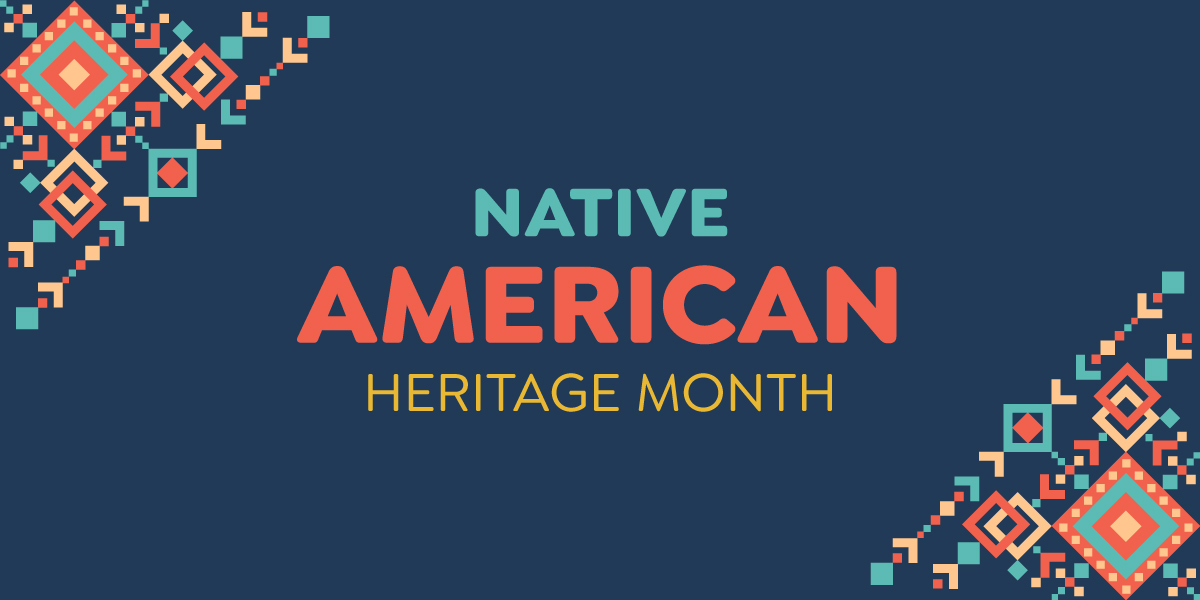Each November, we celebrate Native American History Month. However, one month is not enough time to recognize the rich cultural heritage, enduring contributions, and profound impact of Native Americans throughout history.
Let’s celebrate Native American authors and explore their culture all year. From storytelling traditions to contemporary achievements, Native Americans have significantly shaped the fabric of the United States.
We chose a few favorite children’s books to share the diverse cultures and experiences of Native American communities. Each book not only honors tribal traditions but also fosters a deeper understanding and empathy among young readers.
Our team included a brief statement naming and honoring each author’s tribe and heritage as a small way to help students understand how varied Native American backgrounds are, support discussions, and encourage students to learn more about their own heritage.
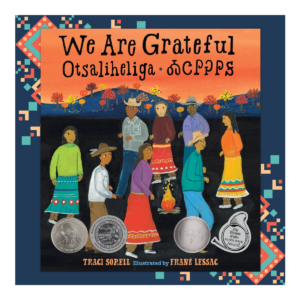 We Are Grateful: Otsaliheliga by Traci Sorell, illustrated by Frane Lessac
We Are Grateful: Otsaliheliga by Traci Sorell, illustrated by Frane Lessac
This beautifully illustrated book explores various aspects of Cherokee culture through the lens of gratitude, featuring traditional practices and celebrations. By showcasing daily and seasonal celebrations, the book highlights the importance of cultural continuity and community while avoiding the idea that culture is only experienced on special occasions.
Traci Sorell is a citizen of the Cherokee Nation of Oklahoma whose work highlights Cherokee language, values, and living culture. Her books, including We Are Grateful: Otsaliheliga, reflect gratitude, community, and the importance of cultural continuity. Illustrator Frané Lessac’s vibrant folk-art style complements the story with detailed depictions of Cherokee life and seasonal traditions.
Something to Try: Use this book to explore Cherokee customs and create a class gratitude project where students share what they are grateful for, integrating cultural practices from the book.
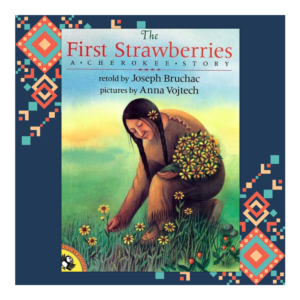 The First Strawberries: A Cherokee Story by Joseph Bruchac, illustrated by Anna Vojtech
The First Strawberries: A Cherokee Story by Joseph Bruchac, illustrated by Anna Vojtech
This tale recounts the Cherokee origin story of how strawberries came to be. The First Strawberries: A Cherokee Story introduces readers to Cherokee culture and mythology focusing on storytelling and oral traditions as a means to teach and preserve the important values such as love and forgiveness.
Joseph Bruchac, a member of the Nulhegan Abenaki Nation, is an acclaimed author and storyteller whose works preserve and share Native oral traditions. The First Strawberries: A Cherokee Story is one of his most beloved retellings, illustrated by Anna Vojtech, whose artwork captures the warmth and beauty of Cherokee mythology.
Something to Try: Have students retell the story through their own illustrations or create a dramatic reading. Discuss the importance of oral traditions in different cultures.
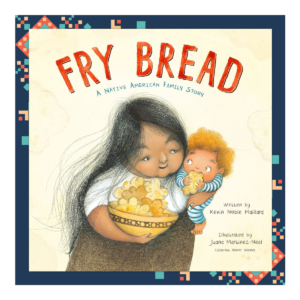 Fry Bread: A Native American Family Story by Kevin Noble Maillard, illustrated by Juana Martinez-Neal
Fry Bread: A Native American Family Story by Kevin Noble Maillard, illustrated by Juana Martinez-Neal
This book explores the history and significance of fry bread in Native American culture, weaving together personal and communal narratives. It provides a historical and cultural context for a beloved Native American food, now enjoyed by people of all backgrounds, and its connection to identity and resilience. Fry Bread: A Native American Family Story illustrates how food can be a powerful symbol of cultural survival and adaptation.
Kevin Noble Maillard, a member of the Seminole Nation, Mekusukey Band, wrote Fry Bread: A Native American Family Story to celebrate family, food, and cultural survival. Illustrator Juana Martinez-Neal brings tenderness and depth to the book through her textured, earth-toned artwork that honors Native traditions.
Something to Try: Incorporate a cooking activity where students make fry bread and discuss its historical significance or expand the options to include food from a variety of cultures. Create a timeline of Native American foods and their cultural meanings.
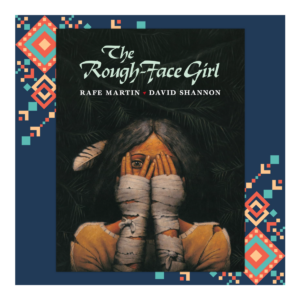 The Rough-Face Girl by Rafe Martin, illustrated by David Shannon
The Rough-Face Girl by Rafe Martin, illustrated by David Shannon
This reimagining of the Cinderella story is set in a Native American context, where the rough-faced girl overcomes challenges to find her place and happiness. The Rough-Face Girl offers a culturally specific twist on a classic tale, highlighting values such as inner beauty and resilience. The book introduces Anishinaabe cultural elements and storytelling practices, fostering respect for indigenous narratives.
Rafe Martin is an American author deeply influenced by Native storytelling traditions. The Rough-Face Girl adapts an Algonquin tale, and illustrator David Shannon’s rich, expressive paintings honor the story’s spiritual and cultural depth while emphasizing resilience and inner beauty.
Something to Try: Compare this story with other tellings of what we consider the story of Cinderella and discuss cultural differences in storytelling. Create a class project to retell traditional stories from the perspectives of different cultures.
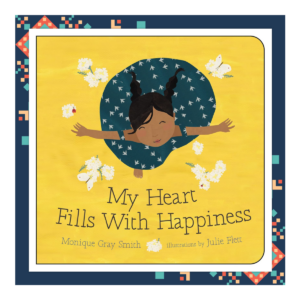 My Heart Fills with Happiness by Monique Gray Smith
My Heart Fills with Happiness by Monique Gray Smith
My Heart Fills with Happiness, illustrated with vibrant art, celebrates the small moments and daily joys that contribute to a happy and fulfilling life. It promotes positive emotional and mental health, grounded in Native cultural values. The book highlights the importance of cultural pride and the joy found in everyday life, fostering a positive view of Native experiences.
Monique Gray Smith, of Cree, Lakota, and Scottish descent, writes to promote healing and well-being through Indigenous perspectives. My Heart Fills with Happiness is illustrated by Cree-Métis artist Julie Flett, whose minimalist style and natural textures amplify the book’s warmth and emotional connection.
Something to Try: Encourage students to create their own happiness books that reflect their sources of joy and cultural practices.
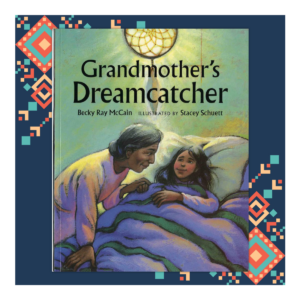 Grandmother’s Dreamcatcher by Becky Ray McCain, illustrated by Stacey Schuett
Grandmother’s Dreamcatcher by Becky Ray McCain, illustrated by Stacey Schuett
This story follows a young girl who learns about the significance of the dreamcatcher and its role in her family’s heritage. Grandmother’s Dreamcatcher introduces readers to the cultural significance and symbolism of dreamcatchers and the concept of preserving family traditions. For many readers already familiar with dreamcatchers, this will offer clarity of how and why these artifacts and their use are important to some native people.
Becky Ray McCain is an author of Chippewa heritage whose stories draw on family traditions and Ojibwe symbolism. Grandmother’s Dreamcatcher, illustrated by Stacey Schuett, honors the intergenerational wisdom and cultural meaning behind dreamcatchers through luminous, tender art.
Something to Try: Have students create their own dreamcatchers and discuss their meanings. Explore other Native American symbols and their cultural significance and create an illustrated guide or presentation to share what is learned.
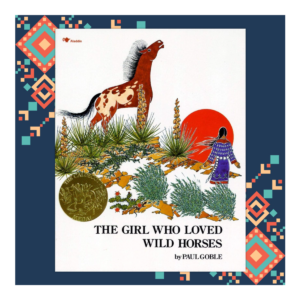 The Girl Who Loved Wild Horses by Paul Goble
The Girl Who Loved Wild Horses by Paul Goble
As a bonus, we’ve included this beautifully illustrated book that tells the story of a young Lakota girl who has a special bond with wild horses and finds her place in the world through her connection with them. Though not by a native author, it is a favorite that highlights the relationship between Native Americans and animals and the importance of understanding and respecting nature. The Girl Who Loved Wild Horses helps readers appreciate the deep spiritual and cultural connections between Native Americans and the natural world.
Paul Goble was an English author and illustrator known for his deep study and respectful representation of Plains tribal cultures, especially the Lakota. In The Girl Who Loved Wild Horses, his intricate, stylized illustrations bring Indigenous symbolism and the bond between humans and nature vividly to life.
Something to Try: Discuss the relationship between Native cultures and nature. Create art projects based on the illustrations and themes of the book.
Using a variety of books in the classroom, including those listed above, during Native American History Month is a great way to begin a larger discussion of the diverse cultures and histories of Native American peoples. These stories integrate aspects of history, geography, and sociology and go beyond the often stereotypical, or even offensive, portrayals of Native Americans in our media. Embracing stories year-round ensures that students recognize and appreciate the rich heritage and ongoing influence of Native Americans on our larger culture.
You can continue honoring the contributions of all people by bringing Youth Empowered Stewardship (YES) to your school. YES is an innovative, experiential process that builds authentic partnerships between students and adults to create vibrant, sustainable communities. Through music, movement, and visual arts, facilitators foster multi-generational collaboration to address complex challenges and drive continuous, asset-based improvement. YES echoes the spirit of these books by uplifting youth voices and building equity through creativity, collaboration, and connection.


